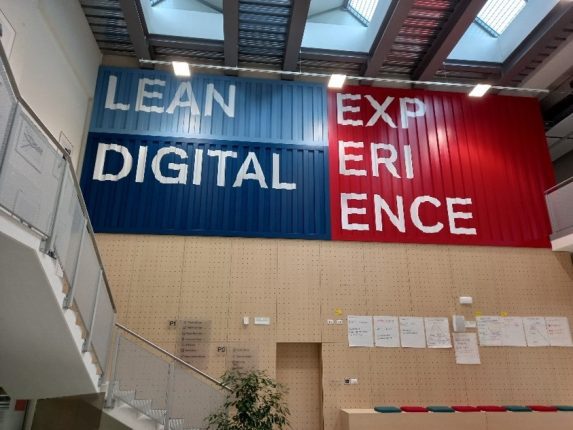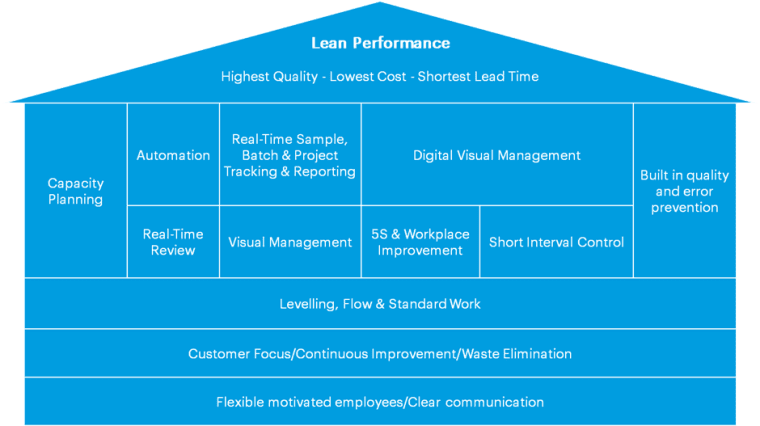
The lean lab: the number 1 pitfall, and what to do about it
Making your lab lean can result in productivity gains ranging from 20% to 80% and improve your customer service levels drastically. But many laboratories, who went through a lean lab exercise in the past, often see the lean lab tactics they implemented set in the background after a while. One of the key reasons for this is that the exercise itself requires a lot of (external) expertise. Once labs can no longer rely on this expertise, the key question, and the number one pitfall, becomes: how can you make your lean lab sustainable and fully ingrain the new habits?
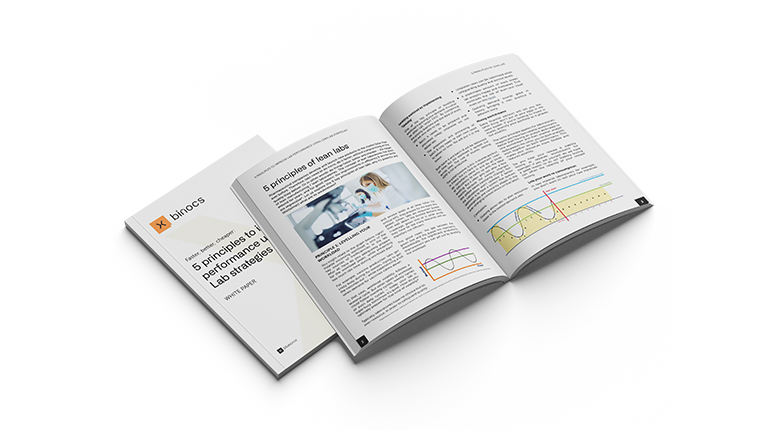
Want to optimize your lab resource utilization?
Take your lab to the next level of operational excellence with our white paper:
5 principles to improve lab performance using Lean Lab strategies
Lean tactics, unique for every lab.
All Laboratories who went through a lean lab exercise, see two prerequisites to become lean:
- Define standardized work for test methods, which requires correct lead times and workloads.
- Install large (magnet) boards for planning and visual management.
However, in the traditional lean lab approach, the promised gains come from basic tactics, such as:
- Create a flow to level demand
- Simple sample grouping rules
- Kanban
- …
There are many blends of lean. And – as every lab is a unique combination of workload, volatility, lead-time, equipment, and test types – the lean lab tactics will vary significantly from lab to lab.
The Achilles heel of the traditional lean lab approach
The Achilles heel of the traditional lean lab approach is that it depends heavily on often counter-intuitive theory and research provided by (external) experts.
With an increasing variety of lab activities and demand, the tactics become too sophisticated. You’d have to be an excellent chess player to understand all the consequences and side-effects of your tactical decisions. In the end, Lean works best when there is 1 test method and 1 channel of demand.
But as lab circumstances change and expertise go elsewhere, … not well-understood tactics are not used anymore. Far too often, this results in lab schedulers spending a lot of time planning & manually juggling tests and campaigns, only to see sub-optimal results.
From traditional lean lab to sustainable lean lab
The solution is to fully harness the potential of modern computer algorithms (=digital lean lab). The benefit here: there is no need for everyone to understand how it’s done because they know they’ll be following the best path possible.
For us, the ‘digital lean lab’ should go further than just digitalizing the magnet whiteboard. It needs to make sure that:
- You no longer need to rely on experts and time-consuming projects to decide upon the best strategy. You need to be able to harness the full potential of modern computer algorithms to automatically calculate the best strategies time and again.
- Everything is constantly optimized: from grouping and holding samples to automatically optimizing the schedule based on due dates, priority rules, competencies, availabilities, and preferences.
The digital lean lab: before & after
How would this look like in your daily work environment? Well, we start from the same lean lab principles: Standard test methods (configured in the system) and a digitalized planning board (replacing the magnet whiteboard). Using readable decision trees (which is basic machine learning), Binocs balances sustainable productivity gains with improved service level (= planning adherence). A couple of screenshots:
Upload or configure your lean Lab timings & ways of working
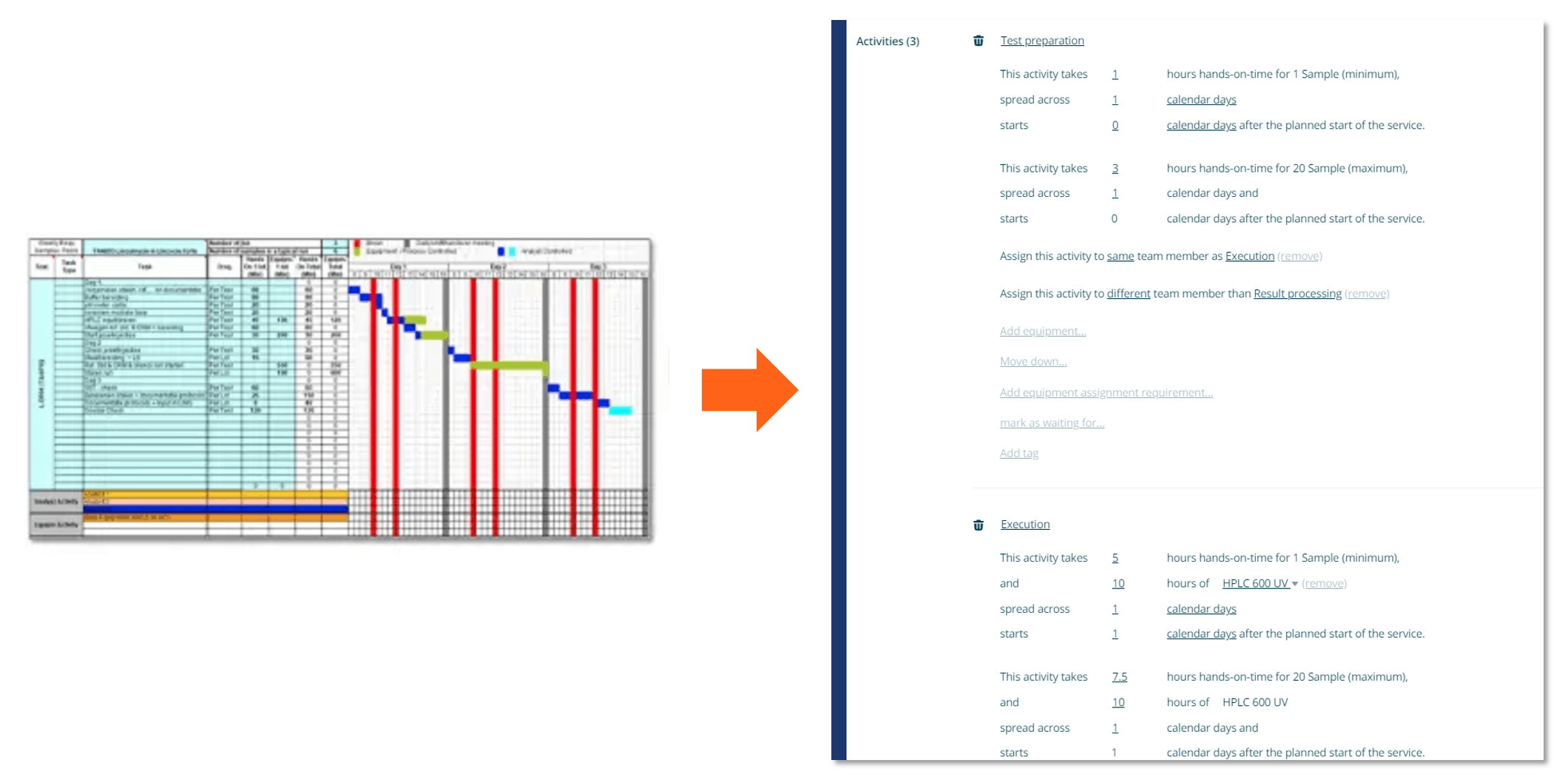
Real-time updates of the schedule optimize analyst efficiency
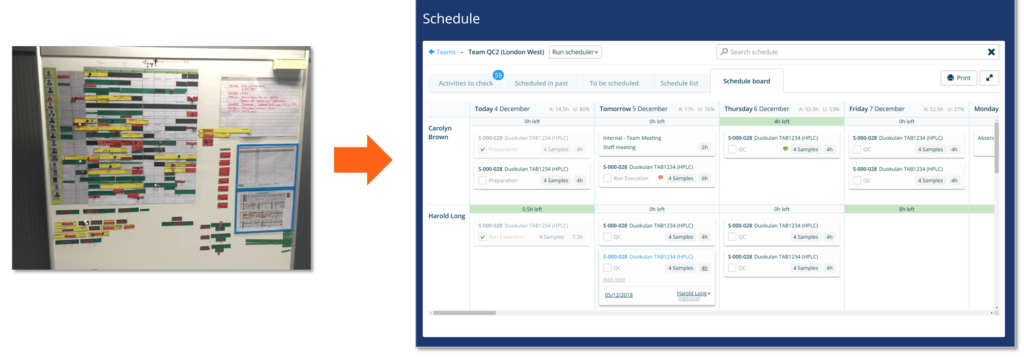
Binocs dynamically optimizes sample campaigning while respecting due dates, priorities and other business rules

Analysts, lab managers the supply chain cockpit and other stakeholders use configurable dashboards giving them instant visibility to the Lab digital twin in Binocs.


Want to optimize your lab resource utilization?
Take your lab to the next level of operational excellence with our white paper:
5 principles to improve lab performance using Lean Lab strategies
A great fit, for every ambition level
Curious to understand better how Binocs can make your lean lab sustainable? Or you are just getting started with a lean lab implementation? Request your demo and let us discuss how we can help!
More information on lean labs
-
Lean methodologies are commonplace in labs worldwide but new technologies may soon render them obsolete. Learn everything you need to know!Read more
-
3 quick wins to make your lab leaner
When I was a Principal Consultant with BSM, I specialized in implementing lean methodologies at pharmaceutical QC labs. Much of the advice that I provided to clients involved establishing…Read more -
The lean experience factory: a digital transformation showcase site
Learn about the Lean Experience Factory, a showcase site for educating companies on Industry 4.0 implementation (featuring Binocs!)Read more
Mathias Lasoen
Mathias is Head of Growth Marketing for Binocs.



